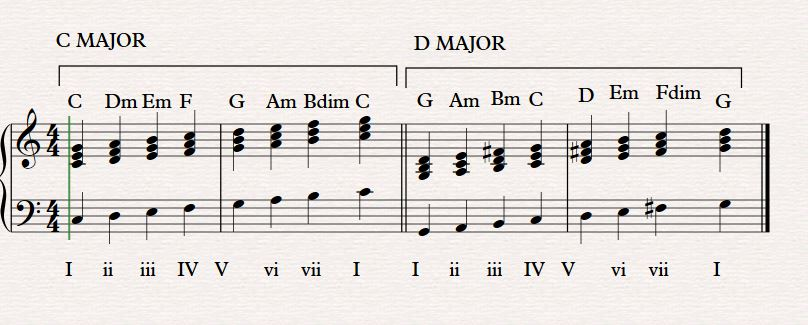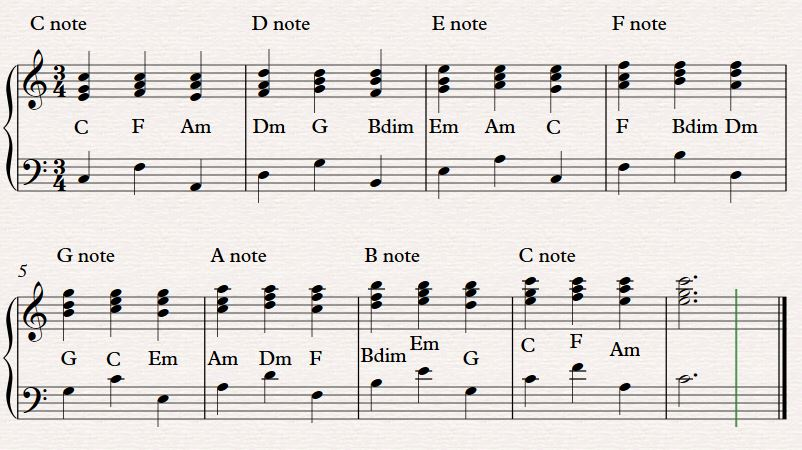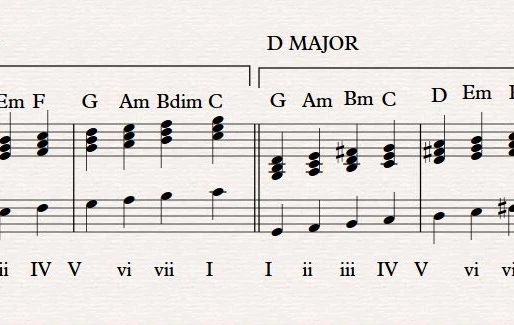Uncategorized
Harmonization of a melody with diatonic triads for piano
The harmonization of a melodic line gives us a guarantee of harmonic consistency over an underlying scale. For that reason, we must study in deep the possibilities at hand. Most of the pianist search the chords by ear, but the whole idea is not to “guess” the chords for a given melody, but to clarify from the very beginning all the different “colors” (triads) for the same passage.
The harmonization is paramount after the initial motive or “riff”, finding the most suitable chords will also help us to determine what are the important degrees of a chord progression.
To begin, I would like to refer to the basics of harmonization with the diatonic triads available in any given major scale. We will begin with C major and G major:

As you can see, we have all the options for every note on the scale played by the left hand. On the upper part, the chord names appear, and on the lower one, the Roman numeral notation, which is used for harmonic analysis. This notation is quite useful as we can clearly see the patterns of the chords on all the notes of the scales: Major (I), minor (ii), minor (iii), major (IV), major (V), minor (vi), diminished (vii dim) and major again (I); knowing this will allow us to transpose the chords in every key we want. Now, let’s suppose we have a melody that is repeated several times. Repetition without variation will eventually sound dull, so the best thing to do is to change another parameter, the harmonic one. In this case the chords below this melody:

We can see in the chart above that every note of the scale from C to C was harmonized by three different triads (see the highest notes) , all belonging to C major (diatonic to C major). Please note that we have three possibilities as every note can be seen as the root, the third or the fifth of any given chord.
This chart should be transposed to every key in order to gain confidence when harmonizing and/or improvising.
Next time, we will see how to harmonize melodies on a minor scale
#GiselaPaterno #giselapaterno #pianolessons #PianolessonsLondon #pianolessonsLondon #pianolessonslondon #pianolessonsforkids #adultpianolessons #PianoteachersLondon #pianoteachersLondon #pianoteachers #pianoteacherlondon #Pianoteachers

